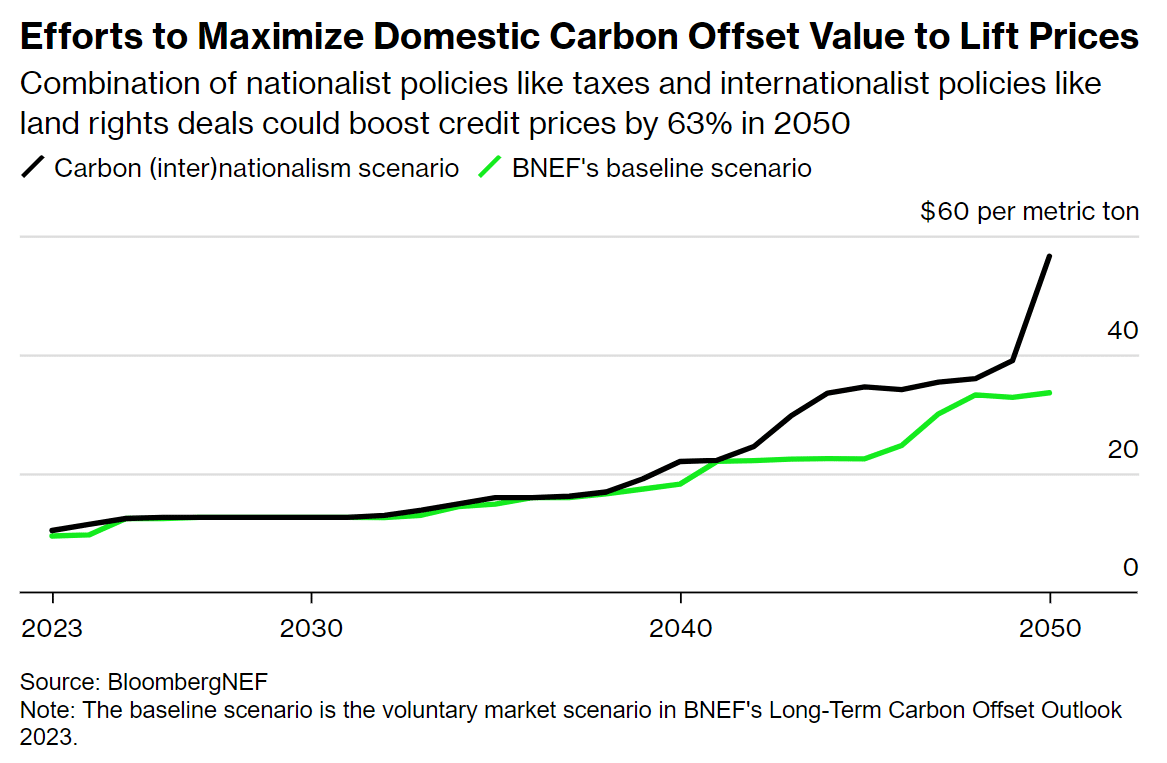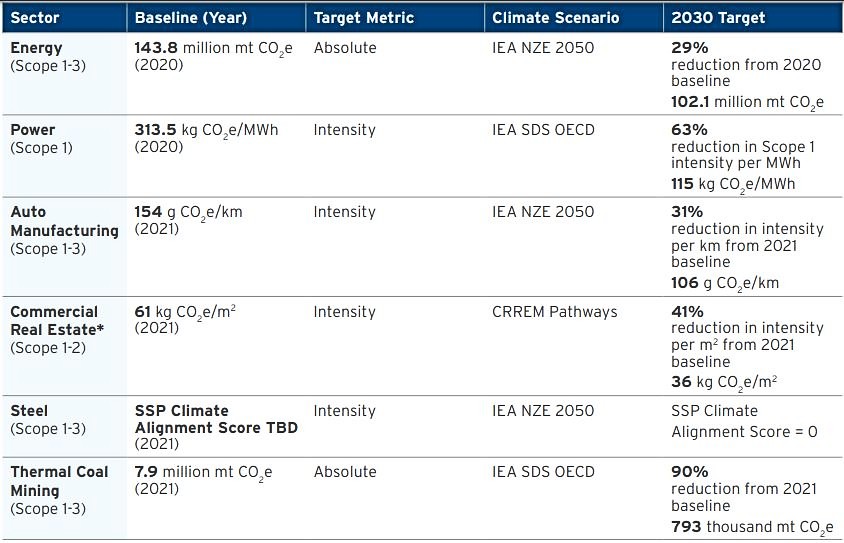At COP28 in Dubai, banks like Goldman Sachs, Citigroup, JPMorgan Chase, and Barclays are gearing up for a surge in carbon offset deals. They aim to finance carbon sequestration projects, trade credits, and aid firms in buying offsets.
This move supports smaller projects in emerging markets lacking financial backing. Sonia Battikh from Citi highlights the struggle of many developers in securing funds, emphasizing the role banks like Citi can play in bridging the financing gap in carbon markets.
Rushing in The Trillion-Dollar Carbon Market
This rush reflects a market poised to hit $1 trillion, aiding companies in achieving net zero without fully cutting emissions. However, the market faces controversies, with some credits receiving criticism for not meeting environmental claims.
The chief of South Pole, the world’s largest seller of carbon offsets, resigned amid greenwashing allegations, prompting a reevaluation. Balancing speed and understanding market norms will be crucial for Wall Street’s success in this evolving voluntary carbon market (VCM).
In 2022, climate commitment from major banks, including Citi, JPMorgan, Barclays and HSBC, have reached over $5 trillion.
Last month, the World Bank announced plans to establish a mechanism for certifying forest carbon credits in the coming months. Their mission is to revolutionize the bank’s operations while boosting the credibility and transparency of VCMs.
Canada’s largest bank, RBC, also supported a global carbon markets company with $8 million to grow its platform.
According to Carbon Growth Partners’ CEO, with growing demand, there would be an under-supply of high-quality credits.
Bankers warn against allowing criticism to undermine confidence in carbon offsets’ future, emphasizing the need to avoid hampering funding for these projects.
Goldman Sachs sees fragmented markets that lack efficiency and transparency. They focus on expanding trading across sustainable commodities, including carbon and renewables. JPMorgan, significantly investing in carbon trading, hired its first voluntary credits trader this year and expanded its carbon capabilities.
However, the arrival of global banks in an underregulated market raises concerns. Michael Sheren warns about the shortcomings of voluntary forest carbon projects, cautioning against relying solely on offsets for net zero emissions.
Despite criticism, offsets play a crucial role in tackling residual emissions in challenging sectors.
Voluntary Carbon Standards at COP28
Reaching the 1.5C global warming target demands substantial carbon reductions and the VCM has a big role to play.
During the first week of COP28, major voluntary carbon standard setters pledged to align best practices and enhance transparency, aiming to establish a robust integrity framework for carbon crediting programs.
The US Commodities Futures Trading Commission (CFTC) revealed standards for high integrity carbon offsets futures trading. UN officials in Dubai expected to unveil new safeguards around VCM based on experts’ drafted rules last month.
In the final stages of COP28, observers await the finalization of rules for a United Nations-governed carbon market under Paris Climate Agreement Article 6.
Carbon prices are in historic lows – 12% dip in demand last year and a projected 5% decline in 2023. Yet, drivers of demand persist.
Factors include companies’ reliance on offsets to meet net zero targets and potential national regulations. These set the stage for a substantial price rise by mid-century, according to BNEF’s research.
In a report by the Ecosystem Marketplace, the average prices of VCM credits hit their highest point in 15 years.
Though the volume of voluntary carbon credits fell by 51%, the average credit price surged significantly by 82%, from $4.04 per ton in 2021 to $7.37 in 2022, which hasn’t been seen since 2008.
Banking Green and Financing Net Zero
Citi’s carbon markets team includes four London-based traders and four salespeople focusing on the voluntary carbon market. The banking giant aims to reach net zero emissions for operations by 2030 using carbon credits. It also pledges to hit net zero for financing by 2050, with the following sectoral emission reductions targets.
Citi 2030 Emissions Reduction Targets
Barclays also recently brought in an industry expert to lead its carbon trading operations.
The future of the carbon offset market holds uncertainties, especially regarding technological advancements that could transform carbon removal efforts. But this potential innovation introduces a risk similar to “venture capital-style risk,” said a Citi executive.
He emphasized that established prices and methodologies are best for carbon credits, but cautioned against using them for emerging technologies. However, he highlighted Citi’s intent to actively engage in removals once it is scaled.
The banking industry stands out in its capacity to help companies transition to a low-carbon economy by financing sustainable projects. If funds from banks are channeled into emission reduction efforts, it would help scale carbon markets faster toward net zero.



